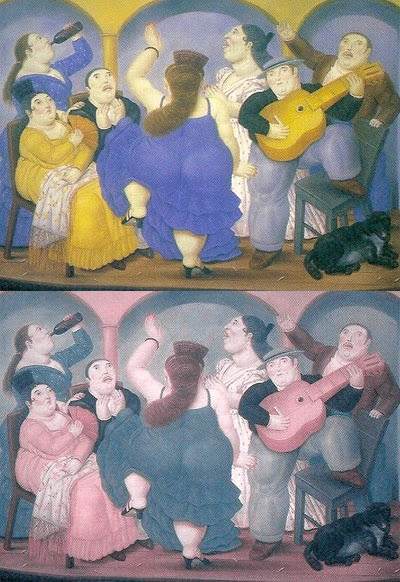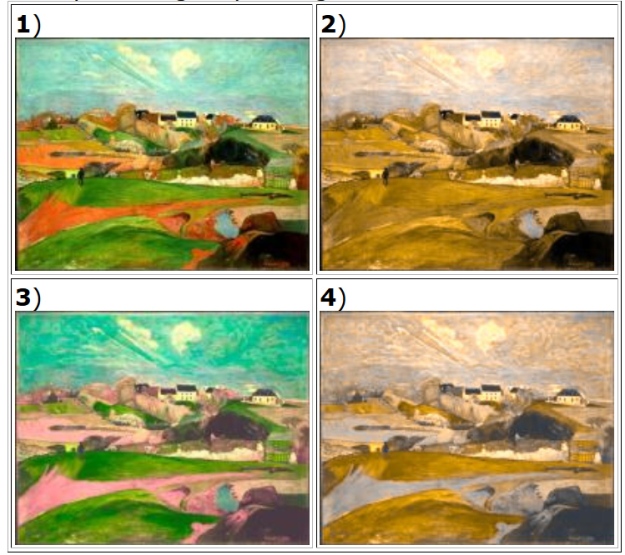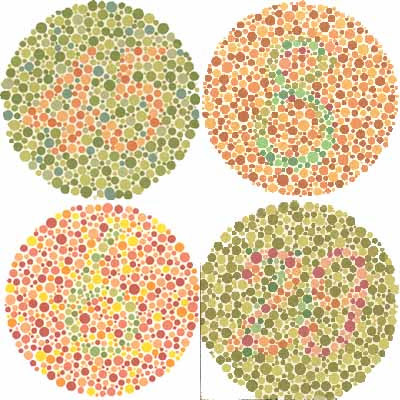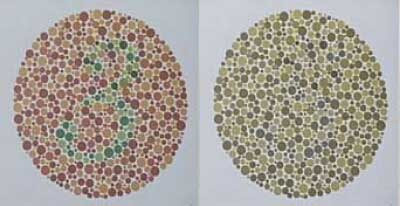What synesthesia is exactly?
Last day I introduced a little this issue and Alberto told me, oh yes! Yesterday I watched a video in Buzzfedd!. So, Here it is. Thank you for your advice.
Synesthesia (from the Greek “syn” meaning together and “aisthesis” meaning senses), is a perception disorder where the stimulus that a person receives through one sense creates at the same time a sensation in another sense. The brain perceives sounds as colors, can feel tastes as a texture on the fingers, “see” sounds, “hear” colors… There are two types of synesthesia. First Degree Synesthesia is the type in which a person “mixes” the impression of two different sense. Second Degree Synesthesia, which is more rare, is when a person associates the impression of a physical sense to an emotion, object, or idea.
Do you know that there are several plastic artists and musicien who are synesthetic?

Keyboard colored as described by Scriabin
Messiaen in his sheet music indicates “blue-orange chords”.
Kandinsky and Paul Klee, both of whom are professors at the Bauhaus School, Piet Mondrian, Francis Picabia, Georgia O’Keefe…
David Hockney was able to join sound and color in the set The Child and the Spells for the Ravel Opera.


Synesthesia is one of the illnesses related to colour. I am going to take advantage to talk about them in this post.
Another is color blindness or daltonism, named after the physicist John Dalton. It is caused by a hereditary genetic error on the X chromosome (which means that there are many more men than women who are colorblind). Julia Testa in Más o menos de Plástica and Vischeck give us interesting information about it.
Generally, these people have problems distinguishing between red and green, although there are other types of color blindness as well:
1. Monochromats: have only one type of cone that is sensitive to red, green, or blue. For example in Rumble Fish by Coppola, Mickey Rourke has a diminishing ability to perceive colors. In fact, the only color that appears in the entire movie and that the viewer can perceive is the redness of the fish.
2. Dichromats: have only two types of cones, and so differences exist in the types of colours that they cannot see:
3. Abnormal Trichromats: have the three types of cones but perceive altered colors
4. Achromats: I have already talked about this type in class when I spoke about “achromatopsia.” Oliver Sacks has a book that is very interesting, The Island of the Colorblind. In it he tells about when he visited several islands in Micronesia, where part of the population suffers from this illness that limits them, but also offers them a different way of seeing the world and its shades and textures.
The Eyeborg: Hearing Colors
Other examples:
1) is the original full-color image, 2) is a simulation of the color-blind view of the full color image, 3) is the Daltonized version of the full color image and 4) is the color blind simulation of the Daltonized image showing improved red/green discrimination. To see how well the Daltonization algorithm works for someone with color blindness, compare images 2) and 4).
To detect if a person is colorblind, there is a simple test. It consists of a series of images in which there appear numbers, letters, or identifiable shapes to someone with a normal retina, but that are imperceptible to someone who is colorblind.
45 in the center of the disk is invisible to someone with red/green color blindness.
To be colorblind does not imply anything other than the person sees colours differently from what they really are. But, are we sure that we all see colors the same anyway? I am sure that the infinite number of shades that a color can have means that there are also an infinite number of different ways to perceive color.
You should always keep in mind that perception of colour depends on the tone of the surrounding background.

Can you see blue and green spirals?

Phil Plait explains that: our brain judges the colour of an object by comparing it to surrounding colours. In this case, the stripes are not continuous as they appear at first glance. The orange stripes don’t go through the “blue” spiral, and the magenta ones don’t go through the “green” one.
The orange stripes go through the “green” spiral but not the “blue” one. So without us even knowing it, our brains compare that spiral to the orange stripes, forcing it to think the spiral is green. The magenta stripes make the other part of the spiral look blue, even though they are exactly the same color.
A red can appear more red or with a more brown tone depending on the uniformity and the tonality of the background, or a green that is very clear can look more yellow if it is presented on a blue background.
In advertising they keep this in mind when they are creating new ads for a well-known brand of cars.







